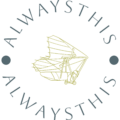In the enchanting world of educational entertainment, LeapFrog stands out as a beacon for young learners. “LeapFrog: Adventures in Shapeville Park” is a shining example of how engaging content can make learning about shapes not only informative but also incredibly fun. This animated adventure takes children on a journey with their favorite LeapFrog characters, Scout and Violet, as they tackle real-world problems through the power of shapes.
As they explore Shapeville Park, kids are introduced to basic geometry concepts, learning about circles, squares, triangles, and more in a context that’s relatable and easy to understand. The clever integration of educational lessons within an entertaining storyline ensures that young viewers are captivated while absorbing valuable knowledge. This approach fosters a love for learning that can last a lifetime, proving that education and entertainment can go hand in hand.
LeapFrog Adventures in Shapeville Park
 LeapFrog: Adventures in Shapeville Park follows LeapFrog characters Scout and Violet as they embark on an engaging journey to help rebuild the Shapeville Park. This animated adventure sets the scene for valuable learning through play, where children are introduced to basic geometry concepts. As Scout and Violet navigate through their tasks, viewers learn about various shapes, including circles, squares, and triangles, and discover how these shapes are part of everyday objects and structures. The educational objectives of this story are clear: to teach children about shapes in a fun and interactive manner, helping them to recognize and name basic geometric figures, and to understand the role shapes play in the world around them. By blending storytelling with educational content, “LeapFrog: Adventures in Shapeville Park” not only keeps children entertained but also actively engages them in learning.
LeapFrog: Adventures in Shapeville Park follows LeapFrog characters Scout and Violet as they embark on an engaging journey to help rebuild the Shapeville Park. This animated adventure sets the scene for valuable learning through play, where children are introduced to basic geometry concepts. As Scout and Violet navigate through their tasks, viewers learn about various shapes, including circles, squares, and triangles, and discover how these shapes are part of everyday objects and structures. The educational objectives of this story are clear: to teach children about shapes in a fun and interactive manner, helping them to recognize and name basic geometric figures, and to understand the role shapes play in the world around them. By blending storytelling with educational content, “LeapFrog: Adventures in Shapeville Park” not only keeps children entertained but also actively engages them in learning.
Key Features of the Game
Interactive Learning Components
“LeapFrog: Adventures in Shapeville Park” excels in its interactive learning components, designed meticulously to engage preschoolers in educational activities. The game employs a hands-on approach, encouraging children to actively participate rather than passively observe. Players interact with Scout and Violet, guiding them through Shapeville Park to complete various shape-related tasks. These tasks range from identifying different shapes to matching them with corresponding objects in the environment. By manipulating shapes to solve problems, children strengthen their understanding of basic geometry concepts. This interactivity ensures sustained attention and facilitates deeper learning experiences. Moreover, the game’s feedback system rewards progress, motivating learners to overcome challenges and achieve learning goals.
Graphics and Audio Elements
 The visual and auditory elements of “LeapFrog: Adventures in Shapeville Park” contribute significantly to its educational efficacy. With vibrant, colorful graphics, the game captures the attention of young learners, making educational content appealing. The characters, environments, and objects in Shapeville Park are designed with clarity and simplicity, ensuring that children can easily recognize and distinguish between different shapes. Sound effects and voiceovers add an extra layer of engagement, with characters providing verbal instructions and positive reinforcement. This combination of graphics and audio supports the game’s educational aims, enhancing comprehension and retention of shape-related knowledge. Through these elements, “LeapFrog: Adventures in Shapeville Park” offers a sensory-rich learning environment that stimulates both visual and auditory learners.
The visual and auditory elements of “LeapFrog: Adventures in Shapeville Park” contribute significantly to its educational efficacy. With vibrant, colorful graphics, the game captures the attention of young learners, making educational content appealing. The characters, environments, and objects in Shapeville Park are designed with clarity and simplicity, ensuring that children can easily recognize and distinguish between different shapes. Sound effects and voiceovers add an extra layer of engagement, with characters providing verbal instructions and positive reinforcement. This combination of graphics and audio supports the game’s educational aims, enhancing comprehension and retention of shape-related knowledge. Through these elements, “LeapFrog: Adventures in Shapeville Park” offers a sensory-rich learning environment that stimulates both visual and auditory learners.
The Educational Benefits
Teaching Shapes and Measurements
 LeapFrog: Adventures in Shapeville Park introduces children to the world of shapes and measurements in a highly engaging and interactive manner. Through the narrative of Scout and Violet, children encounter various shapes such as circles, squares, and triangles, and use these shapes to overcome obstacles within the story. This method not only teaches children the names of the shapes but also how these shapes interact with the world around them. For example, when solving a problem that requires the use of a square, children learn about the properties of squares, such as their four equal sides and four right angles. Similarly, when the characters navigate through spaces that require specific shapes to pass, children gain an intuitive understanding of spatial measurements and geometry.
LeapFrog: Adventures in Shapeville Park introduces children to the world of shapes and measurements in a highly engaging and interactive manner. Through the narrative of Scout and Violet, children encounter various shapes such as circles, squares, and triangles, and use these shapes to overcome obstacles within the story. This method not only teaches children the names of the shapes but also how these shapes interact with the world around them. For example, when solving a problem that requires the use of a square, children learn about the properties of squares, such as their four equal sides and four right angles. Similarly, when the characters navigate through spaces that require specific shapes to pass, children gain an intuitive understanding of spatial measurements and geometry.
Moreover, the game incorporates aspects of comparison and contrast, enabling children to discern differences in size and proportion among shapes. This direct interaction deepens their comprehension of measurements, as they adjust shapes to fit specific purposes, enhancing both their analytical skills and their ability to apply mathematical concepts in practical scenarios.

